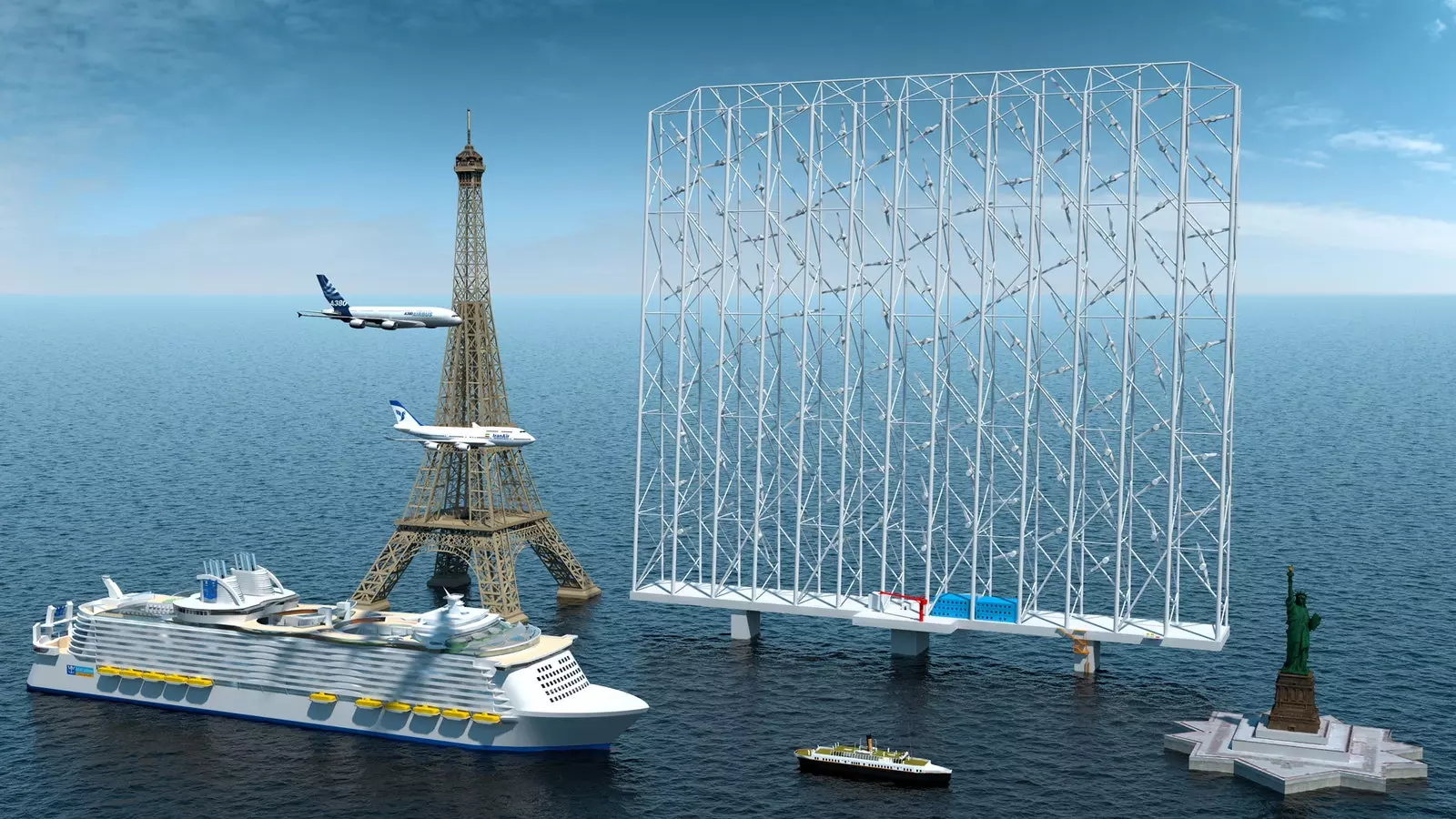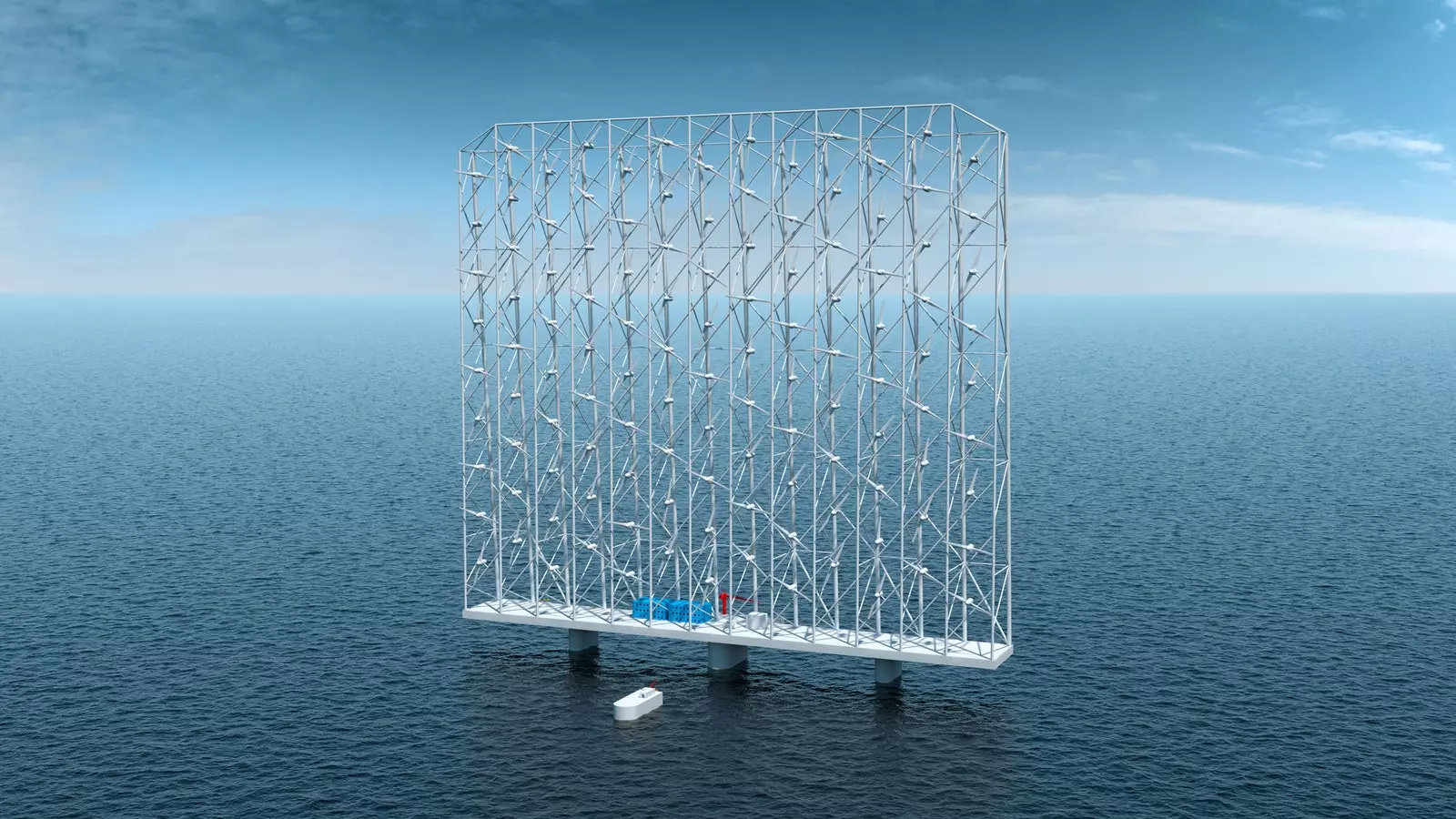The Norwegian company Wind Catching Systems (WCS), has launched a project to produce wind power on a floating platform , using a concept that puts into practice the technical and industrial experiences in order to maximize the energy generation of a concentrated area.
denominated Windcatcher , the structure will be responsible for hosting a dozen turbines that could produce renewable energy for 80,000 homes , five times more than standard offshore wind turbines, according to the company.
The company behind the initiative was founded in 2017 by Asbjorn Nes, Arthur Kordt Y Ole Heggheim, with the ambition to vastly improve the offshore wind technology . From the beginning, the goal of the company from Norway has been to build a system that was sufficiently competitive to operate without subsidies , in addition to being governed under the premise of easy maintenance, durability and simplicity.
So the project leaders set out from certain questions that have led them to conceive their idea: “The basic design used in the offshore wind production today was correct? Was a technology based on that of the old Dutch corn mills really the most efficient method for offshore wind energy production? Current technology had worked well on fixed-bottom land and marine developments, but did this imply that it was necessarily the best system on a float?”.

The Windcatcher structure will measure more than 324 meters high.
“We base ourselves on the finding that the challenges you face the buoyant wind are very different from those faced by the land turbines and fixed in the background and therefore warrant a different approach. With floating foundations it is possible to place much larger structures, and with Windcatcher the purpose is to maximize the benefits of that freedom to generate cheaper electricity using less ocean space” , emphasizes Ronny Karlsen, CFO of Wind Catching Systems, in an interview via email with Condé Nast Traveler.
As long as Asbjørn Nes led the technical design , Ole Heggheim and Arthur Kordt contributed their experience in executing projects in the maritime and shipyard industry , thus devising a structure with more than 324 meters in height, as can be seen in the image where it is compared to Eiffel Tower .
In 2020, Ferd and North Energy they became the company's first outside investors. Together with the support of Innovation Norway, Wind Catching Systems it now has a solid financial base to further develop the technology.
Currently, the company is working on the design and testing of the technology, and according to their estimates, they will complete this stage during 2022, in order to start the construction of the first offshore pilot system between 2023 and 2024.

The Wind Catching Systems project.
"The technology Windcatcher could become a revolutionary initiative for the supply of clean renewable electricity with a minimal impact on environment . We believe that our systems have several advantages compared to other technologies.
So much so that, according to the creators of the Norwegian company, the benefits of the floating marine platform include an ability to generate electricity with grid parity in offshore locations with good wind resources, a use of only 20% of the offshore area to produce the same amount of electricity than conventional floating turbines, reducing both the number of anchor points and cable installations and the effects on marine life , and a long-lasting design (50 years) built with recyclable materials (steel and aluminum).
“We have received a substantial positive response from both the public as well as industrial companies about our design since it went public. We are currently in the initial phase of dialogue with some of the largest industrial companies in the world, and now we are at the point where we have confidence that our technology will be installed”, concludes Ronny Karlsen.
